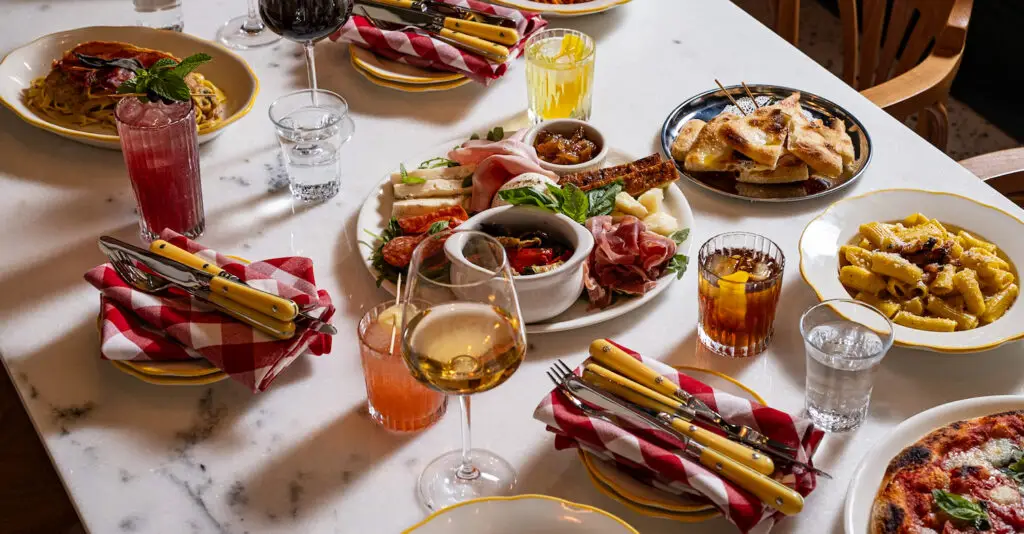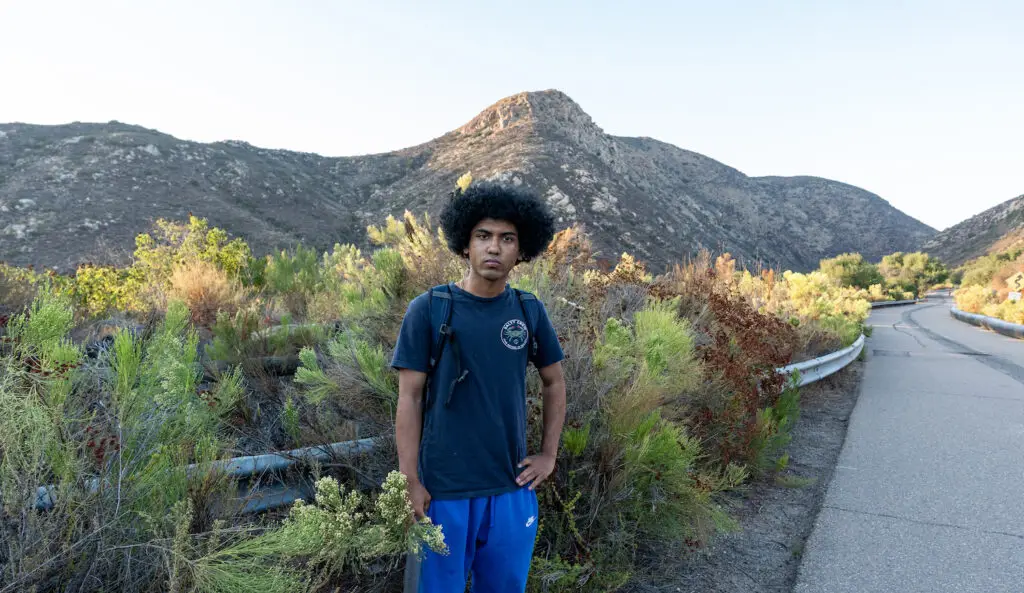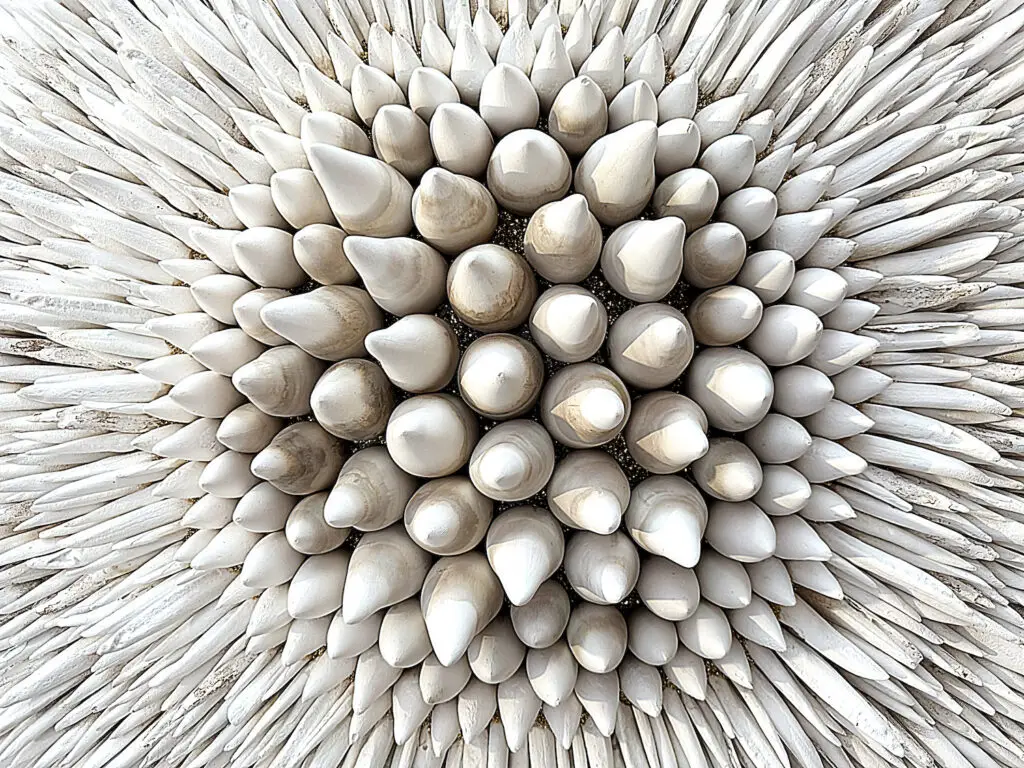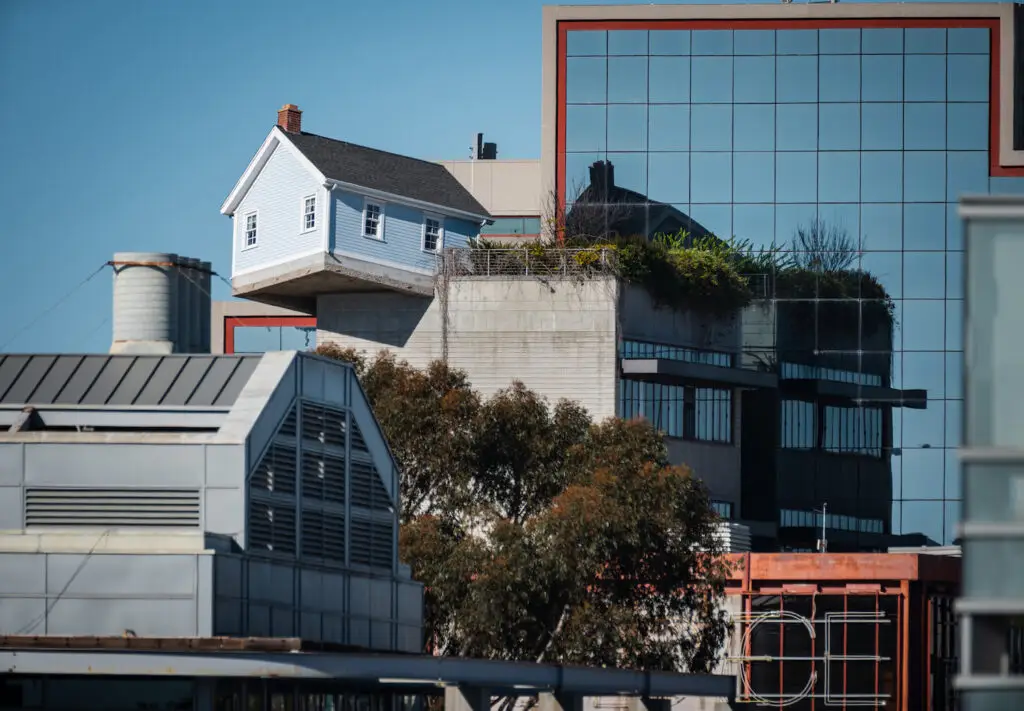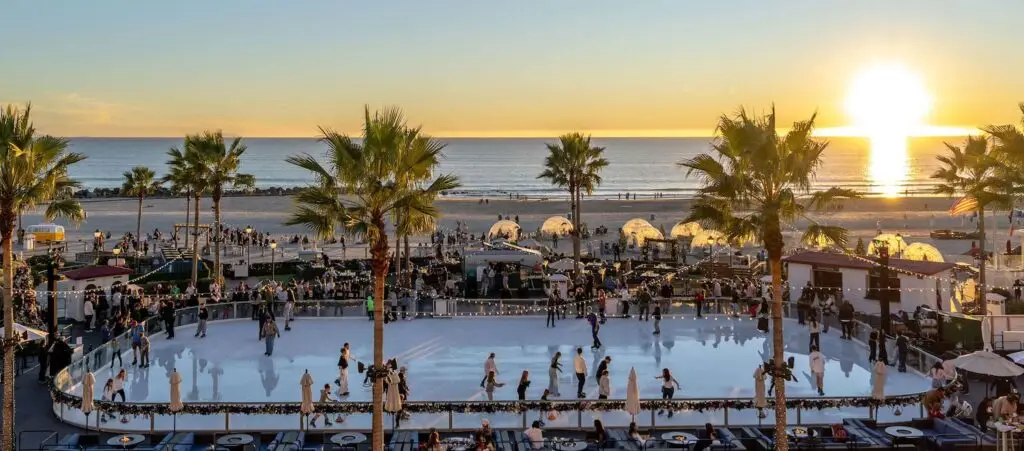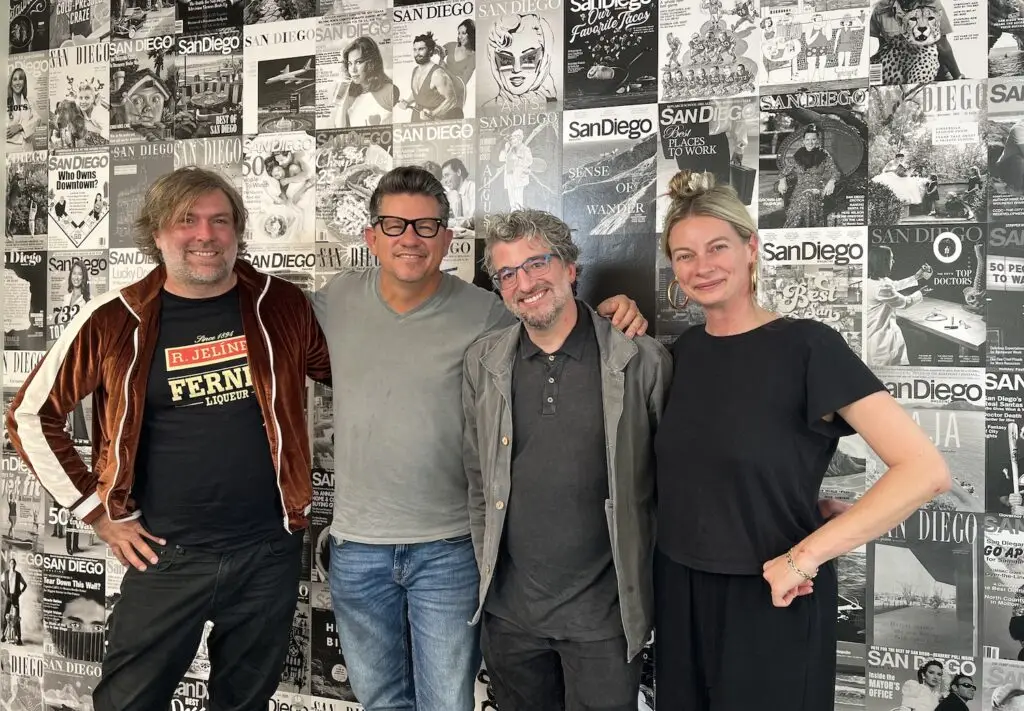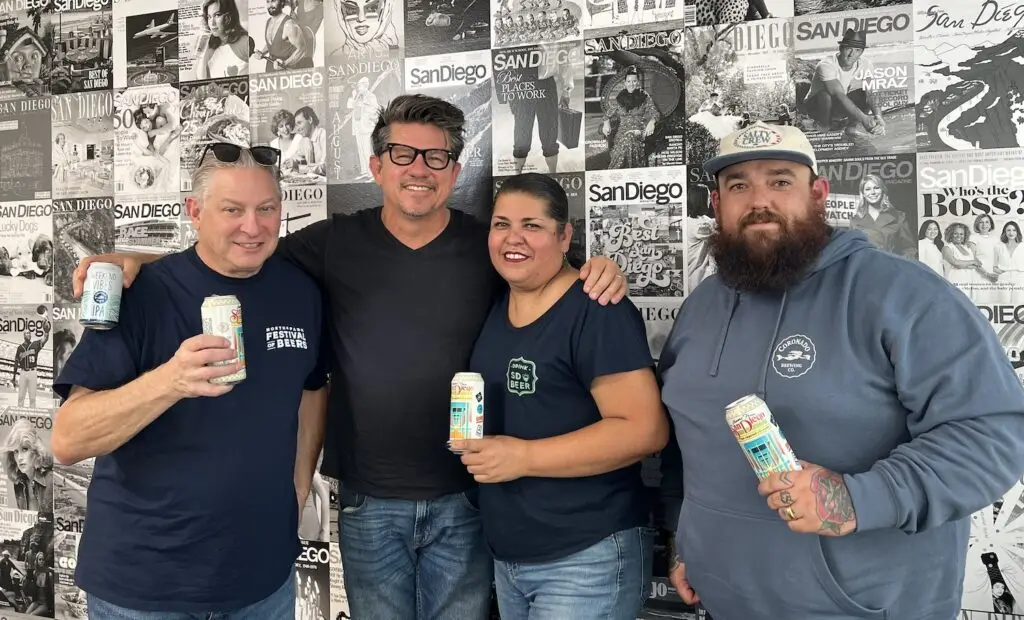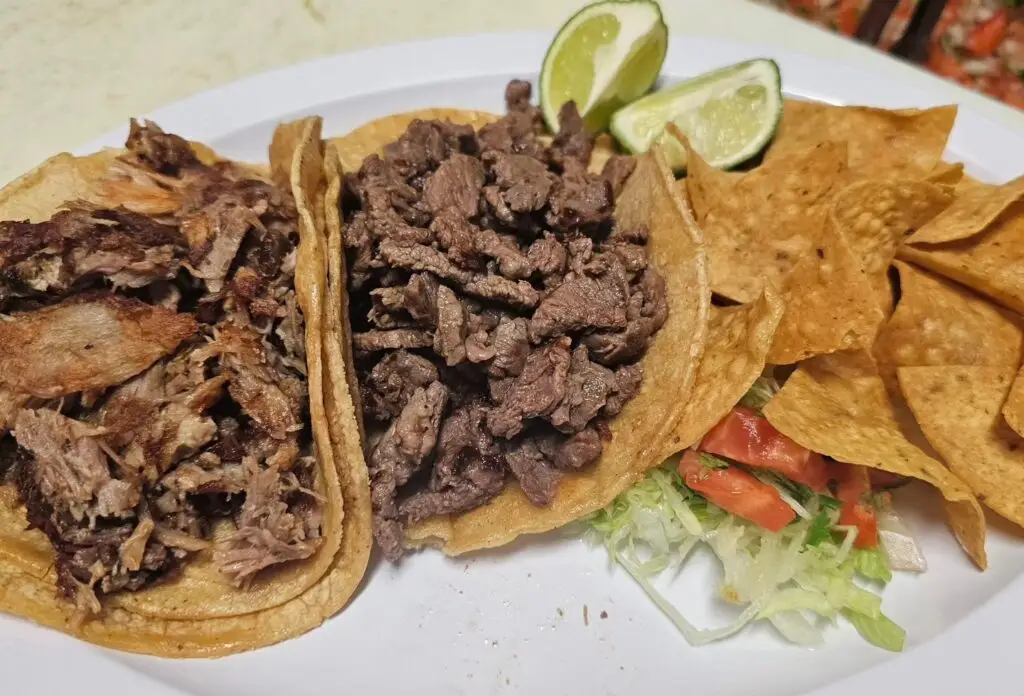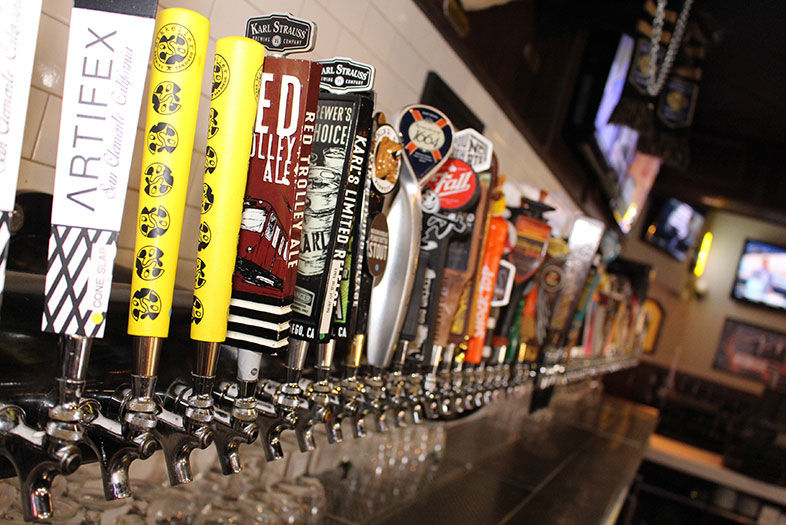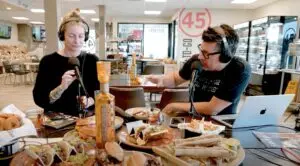From here on out, I’m going to make it a more regular practice to visit one of San Diego’s top craft beer bars in order to glean, from the publican’s perspective, just what our locals and visitors are drinking these days. Every few months, I’ll stop in and chat with an owner or manager in an effort to track trends, opinions, and general preferences of people who love craft beer.
This month, I sat down with Jeff Hall, the beverage director and San Diego area director for Slater’s 50/50, to find out what he sees from behind the bars at Slater’s—bars that offer some of the largest variety of beers anywhere in town. (According to Jeff, Slater’s regularly rotates through 1,500 beers at their various locations.)
Hall explains that the overall Slater’s philosophy is very beer-centric. Every Slater’s has at least 50 tap lines—the Liberty Station location, where I visited, has 100. The idea is to have “beer for everybody,” and part of that philosophy means they don’t alienate the macro brews or shun the styles that, as he puts it, aren’t the “hot cool styles.”
“We like to educate our patrons,” he says, “but if they want Bud Light, that’s also fine. We’re not going to stick our nose up at you. If we can get those folks to buy a Bud Light and then another beer—and get them to be a little more beer savvy and learn something—then everybody wins.” Hall explains that, among their 100 lines at Liberty Station, it’s important for Slater’s to represent a little bit of everything; in other words, they aren’t going to have 98 IPAs, a lager, and a porter. He’s also keen on conveying to patrons that, when it comes to beer, Slater’s doesn’t take itself too seriously: “For example, we’ve always had Mickey’s 40s [malt liquor from Miller] available for purchase here, as well as everything else.”
As for the hard-core beer snobs who say they won’t patronize a place that has the macros on tap, he doesn’t see that very often anymore. “The age of the snobbiest beer geeks has definitely come and gone. There are still some out there, but our message is, hey, don’t take it so seriously.”
Managing 100 beer lines is quite a challenge, not only from a physical maintenance perspective, but also in figuring out what the best mix of brands and styles should be. As far as provenance goes, Hall estimates that his lineup, on average, is about 80 percent San Diego beer. “At the core of the system, it’s trial and error, figuring out what sells and what doesn’t. It’s also particularly important to have your people at the bar talking to customers and paying attention, because they are a key source of information.” Accordingly, all of Slater’s bartenders are Cicerone Certified Beer Servers.
Two other tools Hall uses to gauge what’s selling and what isn’t are an Excel-based algorithm and a weekly physical inventory—literally lifting up 100 kegs to see how full they are. Some of the lines require little analysis: “Our top beers here—we need a keg pretty much every week—like Latitude 33º Blood Orange IPA, Cali Creamin’ from Mother Earth, Pizza Port Chronic, and AleSmith .394. don’t require much in the way of decision making.” Beyond the steady favorites, though, he’s constantly looking at whether he has a good overall balance and whether he’s representing every style. Sure, he knows he always needs a bunch of IPAs, classic styles, and hazy beers, but he also has to figure out how many pales is too many. Or how many lagers make sense. “And then there’s sours,” he says. “Council makes fantastic sours, but it’s a small pour, and that keg doesn’t empty as fast.”
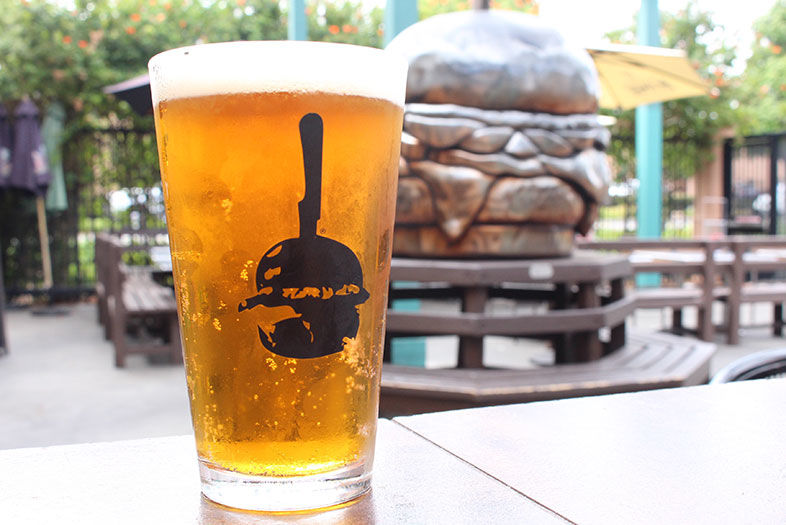
Hazy Beers and Fruited Beers Still Rule the Local Scene
Some top sellers, like AleSmith .394, have permanent handles at Slater’s. | Photo: Bruce Glassman
Different Slater’s also have different beer needs, and thus different mixes. For example, Hall says there’s a noticeable difference between the Liberty Station tap list and the San Marcos tap list, which is actually less San Diego focused. That’s because San Marcos is a different crowd; they’re mostly locals and lots of brewers that ask for a greater range of other craft beer, like IPAs from northern California, Belgians, and imported lagers. In Liberty Station, on the other hand, there are so many tourists that everyone asks for San Diego IPA—they don’t want IPA from Los Angeles or San Francisco. “I get it,” Hall says. “It’s like going to Bordeaux and asking for Spanish tempranillo.”
So what are the hottest beers people are requesting these days? The biggest trend he sees is still the “haze craze,” as he puts it. “People love them. The mouthfeel, the complexity, and the fun flavors.” Hall is quick to point out that he thinks San Diego brewers have had, in general, more fun playing with the hazy styles, saying that Oregon brewers, for example, tend to think of themselves as purists. But for San Diego brewers, anything goes. “I like the fact that we have a lot more fun with it. It’s almost polarizing, because it’s also renewed a demand for the classic styles. For example, years ago, for a sophisticated beer drinker to order lager was almost a faux pas.”
Of course, now lagers are totally cool and trending. The “lager renaissance” probably started with brewers, but then filtered down to the general public. “One thing about lagers is they take a lot longer to get ready,” Hall says, “but lots of brewers are doing them to show that they can be done. And people are drinking them. The most savvy beer drinkers are going all over the board now. They order a pale ale, then an IPA, then a lager.” The fact that he has more lager and pilsner handles than he used to, and that they’re all selling well, proves that lagers may be here to stay for a while. “Modern Times Ice Pils, for example, was supposed to be a one-off thing, but they soon realized it had the potential to be one of their best-selling beers. And that’s what happened. That beer just kills it.” Ice Pils is another permanent handle at Slater’s.
Months ago, the consensus was that any fruited IPA would outsell a regular IPA—like two-to-one. I asked Hall if he thought this was still true, and he felt that hazy and fruited are all one in the same at this point. How do sours fit into that? Hall says sours have been consistently popular, especially fruited sours. “Ommegang makes an incredible pale sour, and Owl Farm makes a great Berliner weisse, which has traditionally been one of those tough beers to get into the market. Good old Dr. Bill at Wild Barrel up in San Marcos labels their weisse beers ‘San Diego Vice’ and they are absolutely outstanding. That’s coming from somebody who respects sours but is not a sour drinker—still, I can drink one of those any day.”
Because Hall and the Slater’s team have a unique “macro perspective” on the brewing community as a whole, I asked him who the most noticeable rising stars are. “Novo Brazil,” he says. “Their hazy program has been fantastic, and their Copa Mango IPA is one of the best-selling beers that I have. Another one is Pizza Port. They haven’t made a comeback exactly, because they never went anywhere, but I think they are able to get their beer out to the market so much better and I notice them a lot more now. They’ve been doing some crazy collaborations, like with AleSmith and Stone. And then there’s one of my absolute favorites: Mikkeller. They’re doing amazing stuff. Oh, and Karl Strauss. They’re kind of a ‘comeback star’ for me. They had gotten kind of stagnant in their core beers, but they have been making some incredible stuff, like Queen of Tarts. I was at GABF when that beer ended up winning in the sour category.”
Considering the vast number of beers at his fingertips every day, I asked Hall what his personal favorites—his “go-to beers”—are. “A good pale ale or Societe Apprentice. As far as my overall favorite from last year, I would say it was this collaboration that Mikkeller and Pizza Port did called Hazy Fuentes, which is a pun you would only get if you grew up in the 90s.” (Daisy Fuentes was a VJ host on MTV.) “It was an awesome beer! It was 10 percent ABV, it was hazy, and it was big and beautiful and balanced.”
Thinking about that beer made him come back around to the fact that he loves how San Diego brewers don’t take themselves too seriously. “We don’t have to prove anything to anybody anymore,” he says. “We’ve got the ability to make award-winning, complex, incredible beer—but let’s have fun, too.”
Note: If you find that the 100 taps at Slater’s Liberty Station aren’t quite enough for you, you can walk across the street and find dozens more at Stone Brewing and at Bottlecraft, in the adjacent Liberty Public Market.
Follow Bruce on Instagram: @sdbrewdude
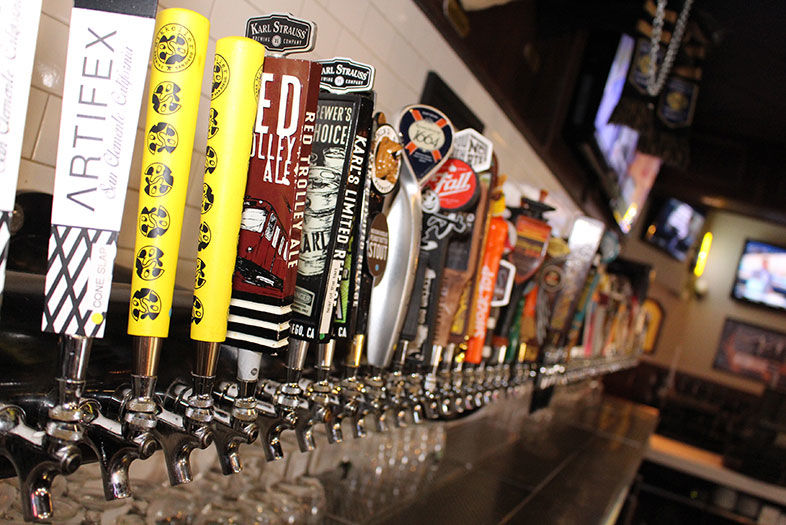
Hazy Beers and Fruited Beers Still Rule the Local Scene
PARTNER CONTENT
Slater’s Liberty Station has 100 beers on tap. | Photo: Bruce Glassman


